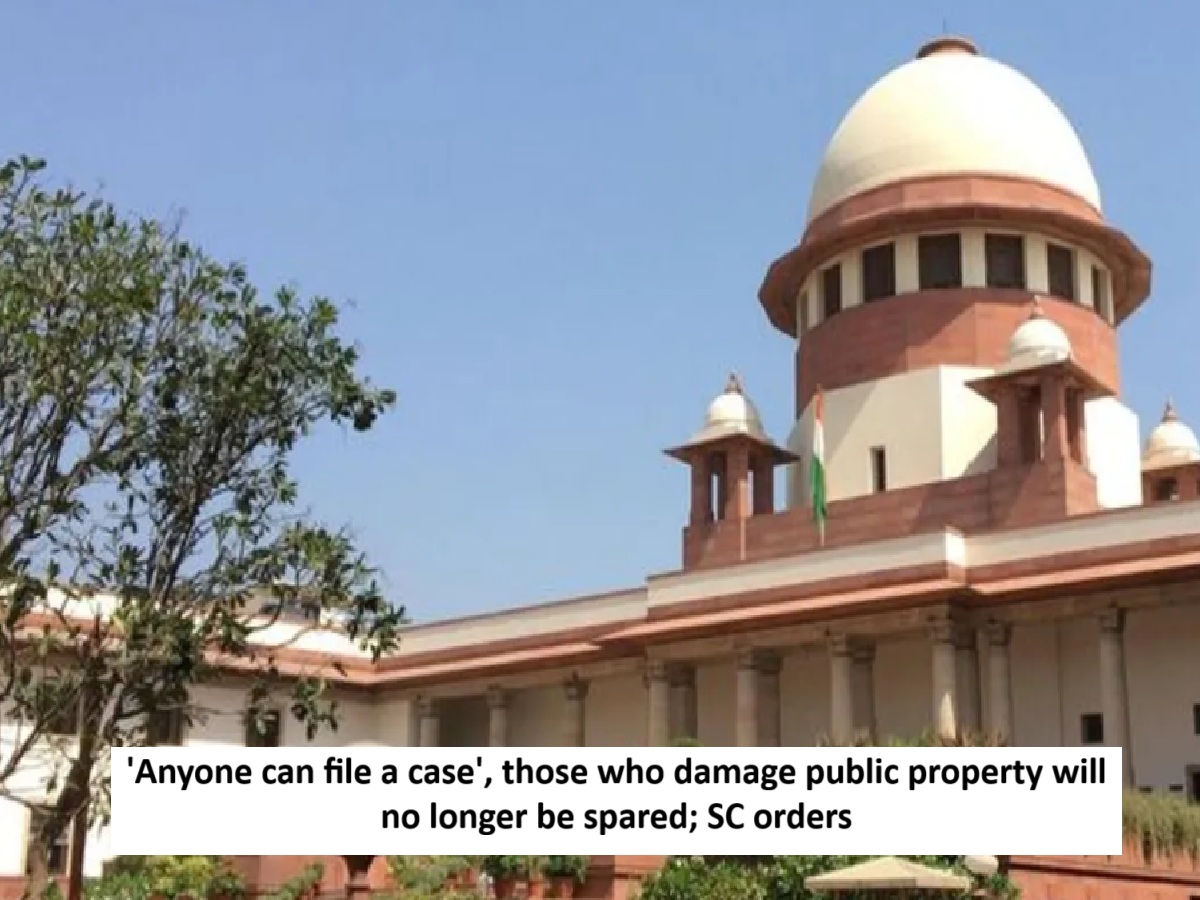
News Topical, Digital Desk : Public property is damaged and destroyed every day. However, those who filed complaints used to get away with it by claiming they were not legally authorized to do so. Now, they will find it difficult to escape.
In an important order, the Supreme Court has clarified that any person can file a complaint regarding damage to public property. The Supreme Court stated that the Prevention of Damage to Public Property Act, 1984, does not specifically limit the eligibility of a complainant. This means that it does not specifically specify who can file a complaint.
Allahabad High Court order set aside
It should be noted that this law provides for punishment up to and including imprisonment. On November 18th, a bench of Justices Pankaj Mittal and Prasanna B. Varale issued this important order while accepting the appeal of Lal Chandra Ram in a case from Azamgarh, Uttar Pradesh. The Supreme Court set aside the Allahabad High Court's September 24, 2024, order quashing the summons issued by the Azamgarh special court against the accused.
The bench noted in its order that several previous Supreme Court decisions have held that there is no law that prevents a person from filing a complaint. The bench specifically cited the 2012 decision in Dr. Subramanian Swamy vs. Dr. Manmohan Singh. In this decision, the Supreme Court held that there is no provision in the CrPC that prevents a citizen from filing a complaint for prosecution of a public servant or any other person who has committed a crime.
That judgment also held that it is a well-established principle of criminal jurisprudence that any person can set in motion the criminal law unless the law providing for or creating the offence is expressly repugnant to it.
What did the bench say in the order?
The bench said in its order that, in the present case, there is no specific provision in the Prevention of Damage to Public Property Act, 1984, that limits the eligibility of a complainant. That is, it does not specifically specify who can file a complaint.
Even in this case of Sidhari police station of Azamgarh, the court said on the cognizance taken and summons issued under laws other than PDPA Act that there is no indication against this principle in the laws given in the charge sheet.
The Supreme Court held that, given these facts and circumstances, the High Court was wrong in holding that the village head was not the competent authority to register the FIR. Therefore, the Special Judge's decision to take cognizance and issue summons to the accused was legally wrong.
What was the matter?
Based on the complaint of the village head, an FIR was registered against the accused, Naushad, and others. Subsequently, the police filed a charge sheet against the accused in the court under sections 147, 323, 504, and 506 of the Indian Penal Code, sections 3(1)(r), 3(1)(s), 3(2)(va) of the SC/ST Act, and sections 3/4 of the Prevention of Damage to Public Property Act, 1984.
The special judge in Azamgarh took cognizance of the charge sheet and issued summons to the accused, which was challenged in the High Court through an appeal. The High Court quashed the summons order, stating that the village head had no authority to file an FIR.
The High Court had said in its order that Sections 67 and 136 of the UP Revenue Code 2006 state that the Land Management Committee or other authority or the concerned Lekhpal will inform the concerned Assistant Collector as per the procedure laid down in the law and not the village head should take action on his own.
But the Supreme Court, while rejecting the High Court order, has said that these sections of the UP Revenue Act are of civil nature and they are applicable in a completely different context, in which the damage caused to public property has to be assessed or the person who forcibly enters the property has to be evicted.
Read More: 'Anyone can file a case', those who damage public property will no longer be spared; SC orders
--Advertisement--

 Share
Share



